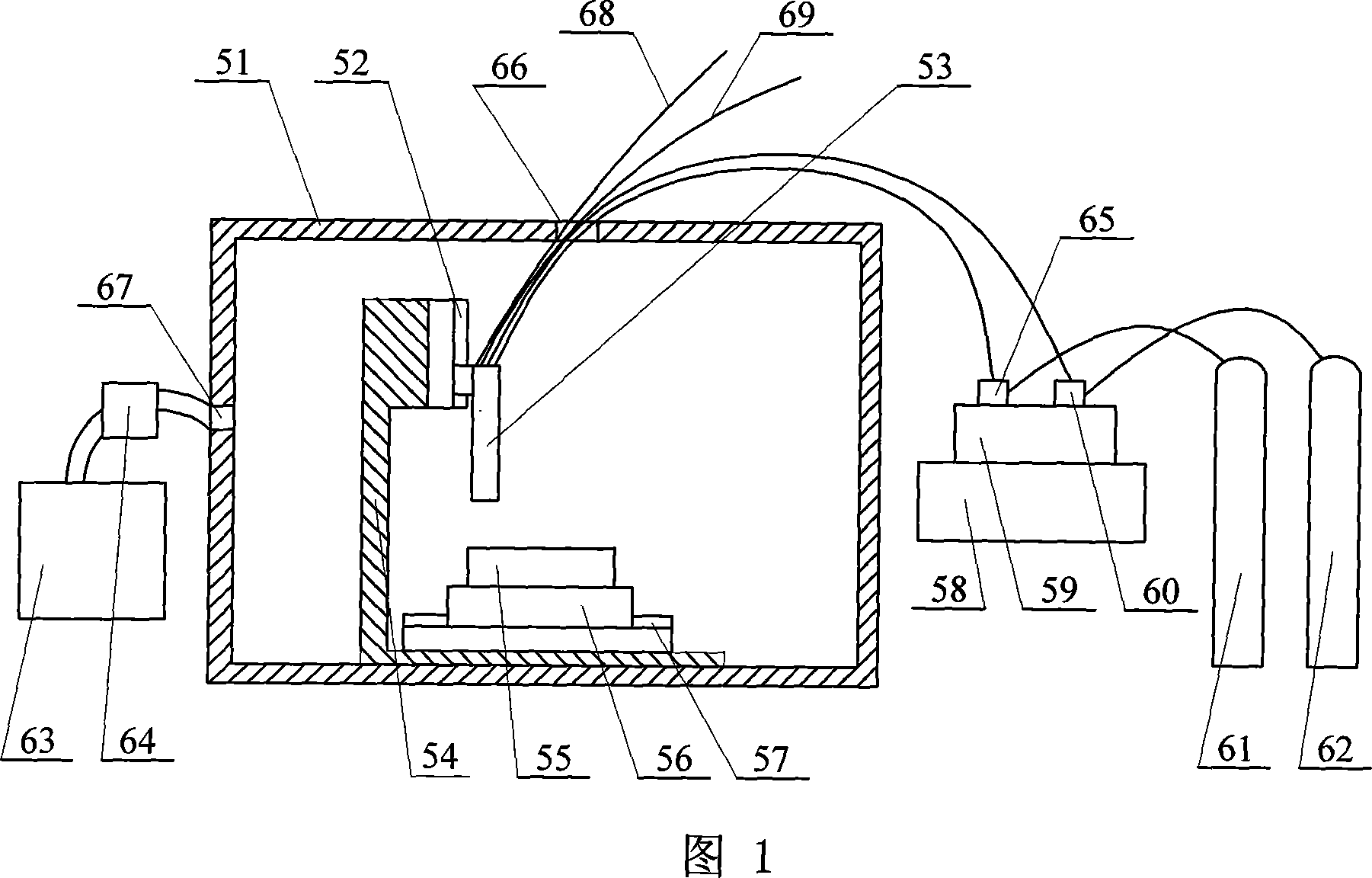Method of polishing normal pressure plasma
A normal-pressure plasma and plasma technology, applied in the polishing field, can solve the problems of difficult surface cleaning, surface and sub-surface damage, low efficiency, etc.
- Summary
- Abstract
- Description
- Claims
- Application Information
AI Technical Summary
Problems solved by technology
Method used
Image
Examples
specific Embodiment approach 1
[0005] Specific embodiment one: (referring to Fig. 1, Fig. 2) the device of this embodiment is composed of airtight working cabin 51, first linkage system 52, plasma torch 53, workbench 56, second linkage system 57, radio frequency power supply 58, radio frequency Matching device 59, first flow controller 60, reaction gas bottle 61, plasma gas bottle 62, gas recovery treatment device 63, negative pressure pump 64 (optional accessory), second flow controller 65, water inlet pipe 68 and outlet Composed of water pipes 69, the first linkage system 52 and the second linkage system 57 are fixed together on the common base 54 on the inner wall of the bottom of the airtight working cabin 51, and the plasma torch 53 is installed on the first linkage system 52 and can be used in the second A linkage system 52 realizes linear motion and rotary motion. The first linkage system 52 is mainly used to adjust the distance between the plasma torch 53 and the workpiece 55 to ensure that the axis ...
specific Embodiment approach 2
[0006] Specific embodiment two: (referring to Fig. 2) the plasma torch 53 of the present embodiment is made of anode water-cooled conduit 1, air inlet joint 3, cathode water-cooled joint one 4, anode 5, cathode 6, cathode water-cooled joint two 8, outer jacket 9, Composed of ceramic nut 10, connecting body 11, and connecting nut 12, the cathode 6 is fixedly connected to the outer casing 9, a water-cooled annular space 13 is formed between the outer wall of the cathode 6 and the inner wall of the outer casing 9, and the cathode water-cooling joint 4 is fixed on one side of the outer casing 9. The outer wall is connected with the water-cooled annular space 13, and the cathode water-cooled connector 2 8 is fixed on the outer wall of the other side of the jacket 9 and communicated with the water-cooled annular space 13. The right end of the ceramic nut 10 is fixedly connected with the left end of the cathode 6, and the connecting body The right end of 11 is fixedly connected with t...
specific Embodiment approach 3
[0007] Embodiment 3: In step 4 of this embodiment, the volume ratio of the plasma gas to the reaction gas is 5:1˜950:1. Other methods and steps are the same as those in the first embodiment.
PUM
 Login to View More
Login to View More Abstract
Description
Claims
Application Information
 Login to View More
Login to View More - R&D
- Intellectual Property
- Life Sciences
- Materials
- Tech Scout
- Unparalleled Data Quality
- Higher Quality Content
- 60% Fewer Hallucinations
Browse by: Latest US Patents, China's latest patents, Technical Efficacy Thesaurus, Application Domain, Technology Topic, Popular Technical Reports.
© 2025 PatSnap. All rights reserved.Legal|Privacy policy|Modern Slavery Act Transparency Statement|Sitemap|About US| Contact US: help@patsnap.com



